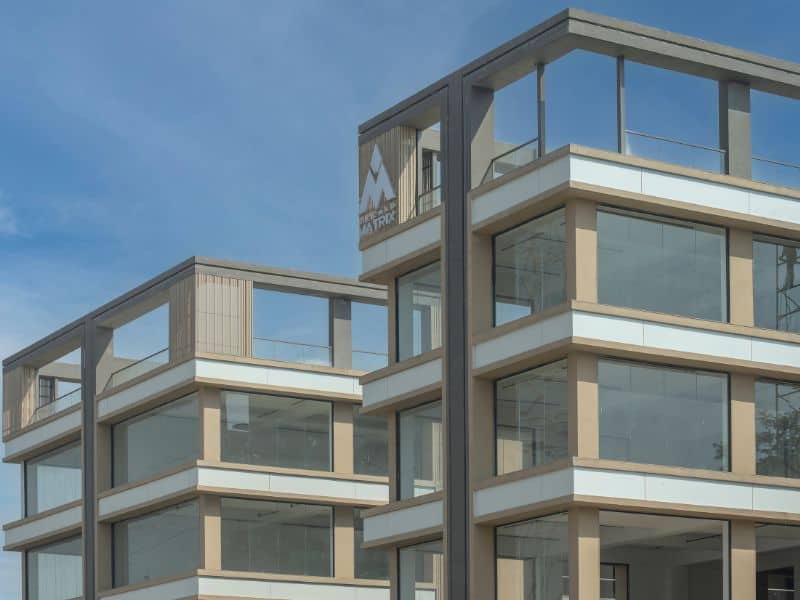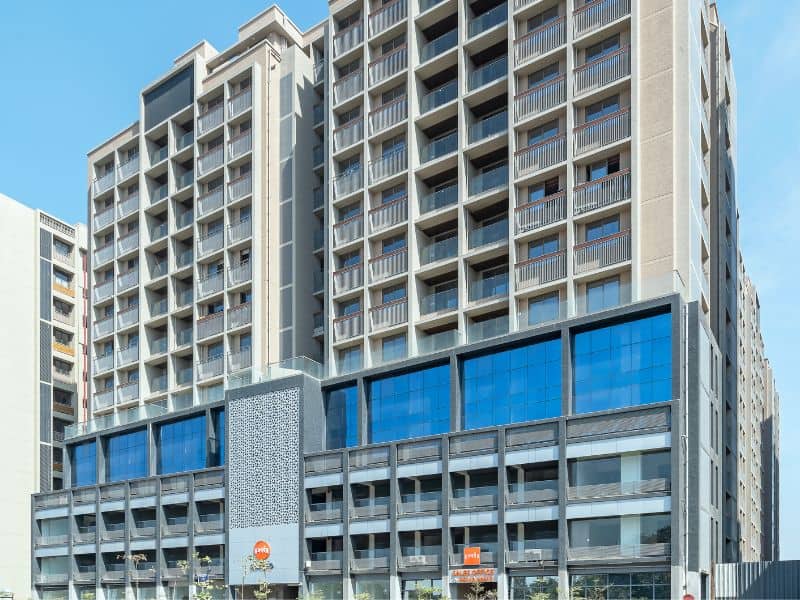Modern architecture in India has moved beyond mere construction to become a statement of identity. The façade of a building is no longer just a protective skin; it reflects the designer’s intent, the builder’s vision, and the occupant’s personality. This is where cladding materials play a crucial role, shaping the aesthetics, performance, and longevity of modern structures.
From traditional stone cladding to innovative ACP cladding, the choice of façade material can transform a project from ordinary to exceptional. In this article, we explore the most popular front elevation cladding materials used in India today and explain why ACP sheets have become the preferred choice among architects and builders alike.
What Is Cladding and Why Is It Important for Building Facades?
Cladding is the external layer applied to a building’s façade to protect it from environmental factors such as rain, heat, dust, and pollution, while enhancing its visual appeal. It acts as both a protective shield and a design element, balancing function and beauty.
In India, where climate conditions range from humid coasts to dry plains, the best exterior cladding material must provide durability, weather resistance, and insulation. Traditional materials like stone and brick continue to have their charm, but modern innovations such as ACP cladding have introduced new possibilities for lightweight, sustainable, and design-flexible façades.
Also Read : Is ACP Sheet Design for Home Good for Upgrade?

Exploring Popular Cladding Materials Used in India
India’s architectural evolution has embraced a range of front elevation cladding materials, each bringing its unique advantages and limitations. Let’s explore five key types shaping modern façades today.
- Stone Cladding: Timeless but Heavy
Stone has been a preferred façade material for centuries due to its natural strength and elegance. It delivers a sense of permanence and grandeur, often used in luxury residences, government buildings, and heritage-inspired designs. However, stone cladding can be heavy, expensive, and labour-intensive, requiring strong structural support and regular maintenance to prevent moisture penetration. Although visually timeless, stone is less adaptable for complex modern elevations where lightness and flexibility are key.
- Brick Cladding: Rustic Appeal for Indian Homes
Brick cladding is known for its warm, rustic charm that adds texture and depth to façades. It provides good insulation, especially in regions with moderate climates. While aesthetically appealing, brick is prone to fading and efflorescence over time, particularly in coastal and polluted environments. The installation process can be slow, and the material’s weight makes it less suitable for large commercial structures. For projects seeking both charm and modern practicality, architects often explore lighter alternatives such as ACP sheet cladding, which can mimic brick finishes without the associated maintenance.
- Wooden Cladding: Warm Look with Maintenance Needs
Wooden façades exude warmth and sophistication, making them popular for boutique hotels, resorts, and premium residences. Their versatility allows endless design expressions. However, wood reacts sensitively to moisture and UV exposure, making it high-maintenance in most Indian climates. Regular polishing, termite protection, and sealing are essential to maintain its look. In contrast, modern ACP sheets now replicate wooden textures flawlessly, offering a similar aesthetic with far better durability and weather resistance, making them an excellent alternative for wood-inspired designs.
- Glass Cladding: Modern, Sleek, and Energy-Intensive
Glass has become synonymous with corporate identity and urban skylines. It delivers transparency, modernity, and lightness, making it a popular choice for commercial towers and public buildings. However, glass façades often contribute to higher heat gain, leading to increased cooling costs. They also pose challenges in terms of privacy and energy efficiency. To balance aesthetics and practicality, architects often combine glass with ACP cladding, creating hybrid façades that achieve both modern sleekness and superior thermal insulation.
- ACP Sheet Cladding: Lightweight and Stylish Choice
ACP (Aluminium Composite Panel) cladding has redefined façade design across India. Comprising two aluminium sheets bonded to a non-aluminium core, ACP sheets are lightweight, versatile, and remarkably strong. They come in a wide variety of finishes, from metallic and mirror to stone, wood, and rustic textures, offering unmatched design flexibility. The lightweight nature of ACP cladding allows quick installation and reduced structural load, making it ideal for both high-rise and retrofit projects. Additionally, fire-rated ACP sheets provide enhanced safety for commercial and government structures, a key reason why they are becoming the best exterior cladding material for modern India.
Why Indian Architects Prefer ACP Sheets Over Other Materials
The growing shift towards ACP sheet cladding isn’t just a trend; it’s a conscious design evolution. Indian architects value ACP sheets for several reasons:
- Lightweight Efficiency: Easier handling and faster installation save project time and costs.
- Design Versatility: Available in countless textures and colours to match any concept.
- Durability: Resistant to corrosion, UV rays, and harsh weather, ensuring a long-lasting finish.
- Eco-Friendliness: Many ACP cladding systems are recyclable and energy-efficient.
- Fire Safety: Fire-rated ACP sheets meet stringent building norms.
For large-scale public or corporate projects, these benefits significantly outweigh those of conventional front elevation cladding materials like stone or brick.
Also Read : Why Are ACP Sheets So Popular for Modern Facades?

Key Factors to Consider Before Choosing a Cladding Material
When selecting the best exterior cladding material, consider these practical factors:
- Climate: Choose materials that withstand the local weather, heat, humidity, or heavy rainfall.
- Building Height: High-rises demand lightweight materials like ACP sheets to reduce load.
- Maintenance Needs: Low-maintenance ACP cladding ensures long-term savings.
- Aesthetic Requirements: Select finishes that align with the building’s design language.
- Budget: Factor in not only initial costs but also maintenance and replacement cycles.
Cost and Maintenance Comparison for Indian Projects
While stone and glass may appear premium, their installation and upkeep can be costly. ACP sheets, on the other hand, provide a modern, high-quality finish at a fraction of the weight and long-term expense.
Routine cleaning with mild detergent is enough to maintain the look of ACP cladding for years, making it an economical choice for government projects, commercial complexes, and institutional buildings.
Also Read : 5 Crucial Factors to Evaluate Before Purchasing ACP Sheets for Your Project.
How Climate Affects Cladding Material Performance
India’s diverse climate demands materials that adapt well across zones.
- In humid coastal regions, ACP cladding resists corrosion better than steel or wood.
- In hot northern cities, ACP sheets with high UV resistance prevent colour fading.
- In dusty regions, smooth ACP surfaces reduce dirt adhesion and are easier to clean.
This adaptability makes ACP cladding one of the most sustainable choices for modern façades in India.
FAQs: Your Common Questions About ACP Sheets Answered
- What materials are used in façade cladding?
Façade cladding materials include stone, brick, wood, glass, and ACP sheets, each offering distinct advantages in appearance, performance, and cost. - What are the different types of cladding materials?
Common types include natural stone, brick, wood, glass, metal, and composite panels such as ACP cladding. - What is the difference between ACP and cladding?
Cladding is the process of applying an outer layer to a building, while ACP (Aluminium Composite Panel) refers to one specific type of cladding material. - What are the different types of natural stone cladding?
Granite, sandstone, slate, limestone, and marble are popular natural stone types used for traditional cladding.
Conclusion
From heavy stone to lightweight composites, India’s façade landscape has evolved dramatically. Among all front elevation cladding materials, ACP sheet cladding stands out for its balance of strength, aesthetics, and efficiency.
It empowers architects, builders, and government institutions to create façades that are not only beautiful but also intelligent, combining performance with purpose.
Whether it’s a corporate tower, residential complex, or public structure, the choice of ACP sheets is a forward-thinking step towards sustainable, stylish, and enduring architecture.
To explore high-quality ACP solutions for your next project, visit enquiry page or call 1800 102 0407. Let’s build something beautiful together.